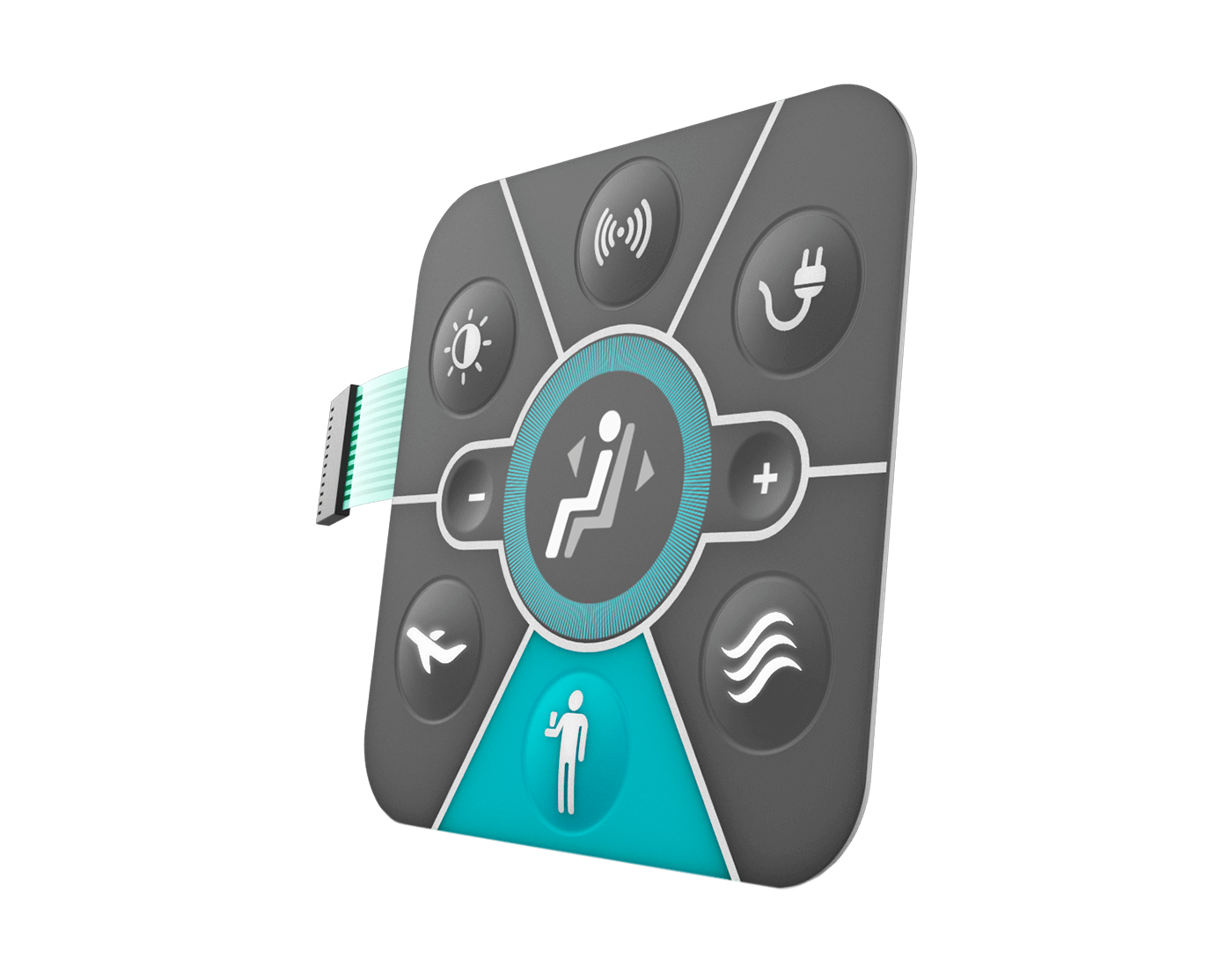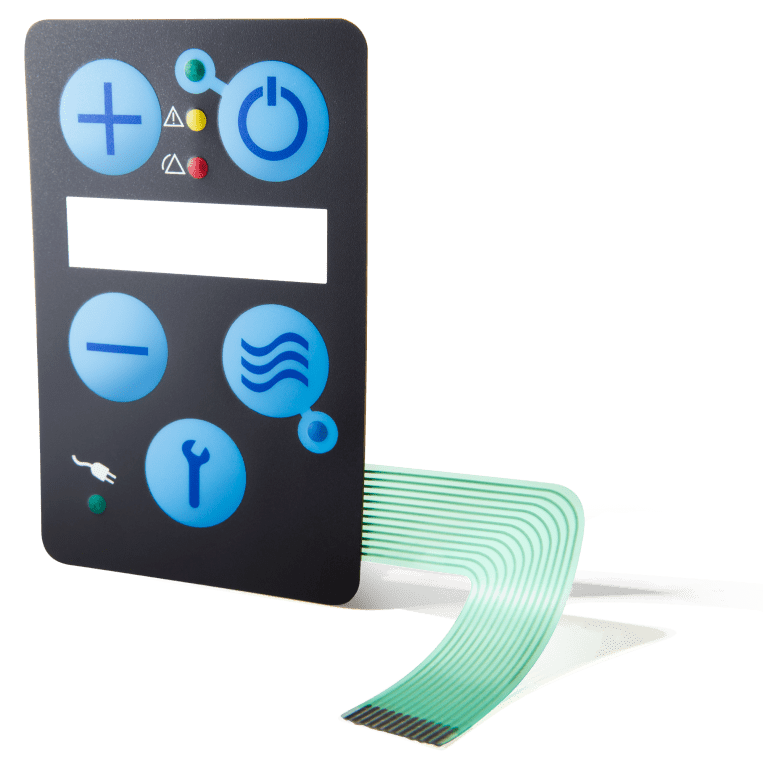Comprehending the Relevance of Membrane Switches in Interface
Membrane buttons are integral parts in the style of reliable customer interfaces, assisting in not only capability yet also enhancing aesthetic charm and customer communication. As we discover the future fads and various advantages associated with Membrane technology, it ends up being clear that these buttons are a lot more than simply elements; they stand for a merging of innovation and practicality.
What Are Membrane Buttons?

The spacer layer, which includes adhesive buildings, enables the separation of the circuit layer from the overlay, guaranteeing that the switch remains in a non-activated state till pressed. When pressure is put on the overlay, it compresses the spacer layer, bridging the void and completing the circuit in the underlying layer. This design not just lowers the physical room needed for typical mechanical switches but additionally improves the sturdiness of the tool, as Membrane switches are normally resistant to dirt, dampness, and various other ecological factors.
Typically found in applications ranging from consumer electronic devices to clinical devices, Membrane buttons are important to modern technology, giving a effective and straightforward user interface that aligns with modern design requirements.
Advantages of Membrane Buttons
While many switch technologies exist, Membrane Switches deal distinctive benefits that make them especially desirable in various applications. Among the main benefits of Membrane buttons is their portable layout, which permits space-saving applications in gadgets where genuine estate is limited. Their thin account not only improves aesthetic allure but also assists in lightweight building.
An additional significant advantage is their resistance to ecological variables. Membrane buttons are usually secured versus dampness, dirt, and contaminants, making them excellent for use in demanding environments, such as clinical gadgets and industrial devices. This resilience expands the life expectancy of the button, minimizing upkeep expenses and boosting dependability.
Additionally, Membrane buttons can be customized to meet certain layout needs, including unique graphics and shades that boost customer communication. Their tactile feedback alternatives can also be tailored to supply an enjoyable individual experience. In addition, Membrane buttons are economical, specifically in high-volume applications, as they can be generated efficiently.
Applications in Numerous Industries

In the consumer electronics market, Membrane buttons prevail in devices such as microwaves, washing equipments, and push-button controls. Their tactile feedback and aesthetic options boost customer experience while providing a streamlined, contemporary look. Additionally, automobile producers utilize Membrane switches in dashboard controls and infomercial systems, where space is restricted, and individual involvement is vital.
In addition, the industrial market leverages Membrane switches in control panels for machinery and tools, enabling instinctive operation in frequently severe atmospheres. Their resistance to chemicals and moisture ensures long life and reliability in these applications. Generally, the flexibility of Membrane Switches contributes dramatically to their widespread usage, making them essential in various technological domain names.
Design Factors To Consider for Membrane Switches

When creating Membrane switches, several key factors to consider need to be thought about to make sure optimal capability and customer experience. The selection of materials is essential; selecting long lasting, premium substrates can enhance the switch's long life and resistance to environmental factors such as dampness and temperature level changes.
Second of all, the design of the visuals overlay ought to focus on quality and convenience of usage. Icons and message must be understandable, and the design needs to promote user-friendly interaction (membrane switches). Furthermore, responsive feedback is vital; including a tactile dome or other devices can boost the user experience by giving physical confirmation of activation
Another vital element is the switch's electrical efficiency. Developers must guarantee that the conductive traces are effectively designed to reduce resistance and avoid signal interference. This includes examining the required actuation pressure and making certain compatibility with the digital elements they will certainly interface with.

Future Patterns in Membrane Modern Technology
As modern technology remains to advancement, Membrane switches are poised to evolve significantly, driven by developments in materials and manufacturing methods. One emerging fad is the incorporation of advanced products, such as flexible substrates and conductive inks, which improve resilience and lower the total weight of Membrane switches. These products not just enhance the responsive response yet additionally enable the design of switches that can endure harsher ecological conditions.
Additionally, the assimilation of touch-sensitive technologies is transforming typical Membrane Switches into more interactive individual interfaces. Capacitive blog touch sensors installed within Membrane button panels can provide a more receptive and instinctive individual experience, straightening with the growing demand for streamlined, modern-day styles in consumer electronic devices.
Furthermore, improvements in printing strategies, such as digital and 3D printing, make it possible for fast prototyping and personalization of Membrane buttons. This adaptability permits manufacturers to react faster to market demands and customer preferences.
Lastly, sustainability is ending up being a significant emphasis, with manufacturers discovering eco-friendly products and processes. As these patterns unravel, the future of Membrane technology guarantees boosted functionality, visual allure, and ecological responsibility, solidifying their function in innovative interface across various markets.
Conclusion
In conclusion, Membrane Switches stand for a browse around this site vital element in the style of user interfaces, integrating functionality with visual adaptability. Their advantages, consisting of sturdiness and resistance to ecological factors, make them appropriate for varied applications throughout numerous markets. Thoughtful style considerations enhance individual interaction and experience. As developments in modern technology continue, the evolution of Membrane buttons is expected to further refine user interfaces, driving technology and improving usability in a progressively complex technical landscape.
Membrane buttons are integral components in the design of reliable individual interfaces, helping with not just functionality yet also improving visual charm and individual communication.Membrane Switches serve as an essential element in different individual interfaces, assisting in a smooth interaction in between users and electronic devices.While countless switch modern technologies exist, Membrane Switches my response offer distinct advantages that make them especially desirable in different applications.Furthermore, Membrane buttons can be tailored to fulfill particular design demands, including unique graphics and colors that boost individual interaction.In final thought, Membrane Switches stand for an essential element in the style of user interfaces, incorporating performance with visual adaptability.